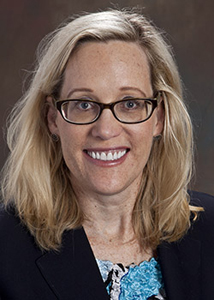Program Information
Computed Tomography 1: Iterative Reconstruction and Imaging Gently (or, Squeezing the Most Out of Every Photon and the Benefit of Doing So)
K Applegate1*, J Stayman2*, (1) Emory University SOM, Atlanta, GA, (2) Johns Hopkins University, Baltimore, MD
MO-A-134-1 Monday 8:00AM - 9:55AM Room: 134Iterative Reconstruction Methods in Computed Tomography – J. Webster Stayman, Ph.D.
Sophisticated iterative reconstruction methods for computed tomography have seen more widespread adoption with the availability of increased computational power and the desire for improved dose utilization. While improved image quality and dose reduction are possible with iterative approaches, there is a (sometimes confusing) diversity of algorithm choices. This presentation will introduce the basic concepts behind iterative reconstruction and statistical methods, including how such approaches are formed and illustrating different classes of reconstruction algorithm. Differences between iterative approaches and traditional reconstructions will be discussed - both in terms of how data is processed as well as the differing image properties that arise from each type of algorithm. The lecture will highlight advantages and limitations of iterative reconstructions and provide listeners with a basic introduction of the inner workings of the iterative methodology.
CT Dose Optimization: The Image Gently and Image Wisely Campaigns – Kimberly E. Applegate, MD
The radiology community (radiologists, medical physicists, and radiologic technologists) has led the educational and awareness efforts to reduce radiation dose to our patients through effective collaborations that bridge traditional specialty silos and reach all stakeholders. These successful collaborations have included CT vendors and regulators, with the overarching goal of dose reduction while attaining the required image quality.
As an example of where the collaboration of radiologists, physicists and technologists can bear fruit is in the optimization of CT scanning parameters to account not only for size but for the differences in physiology and pathology between children and adults. In some instances this allows us to reduce the dose in children significantly while not compromising the diagnosis.
It is critical that the entire radiology sciences community continue to act as leaders in these efforts. In order to be successful, we must understand the current state of the science and what resources are available to us.
Learning Objectives:
1) Understand the fundamentals of how iterative methods are formed and how to identify particular classes of iterative methods.
2) Gain intuition into the flexibility of iterative methods and why these approaches can have an advantage over other techniques.
3) Learn about the nature of iteratively reconstructed images and how images produced by these methods can have significantly different image properties from those produced by traditional analytic approaches.
4) Provide the current state of the science regarding cancer risk from medical procedures using ionizing radiation
5) Understand the radiation dose reduction goals and educational materials for all stakeholders involved in imaging children (Image Gently) and in imaging adults (Image Wisely)
6) Understand the differences in imaging requirements between children and adults in order to foster optimal CT scanning techniques
7) Become familiar with the 'Choosing Wisely Campaign' that promotes appropriate use of medical resources
Contact Email:





